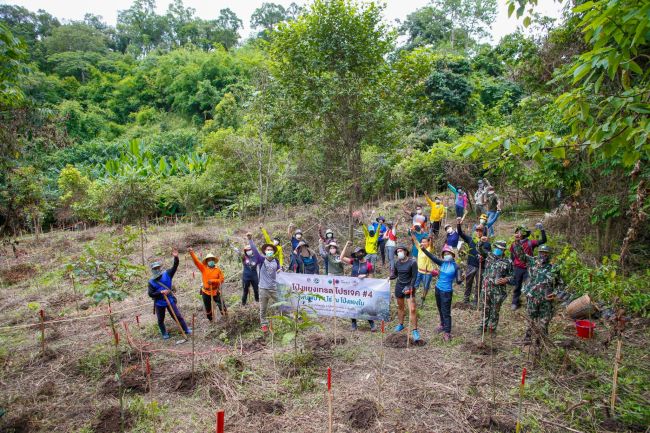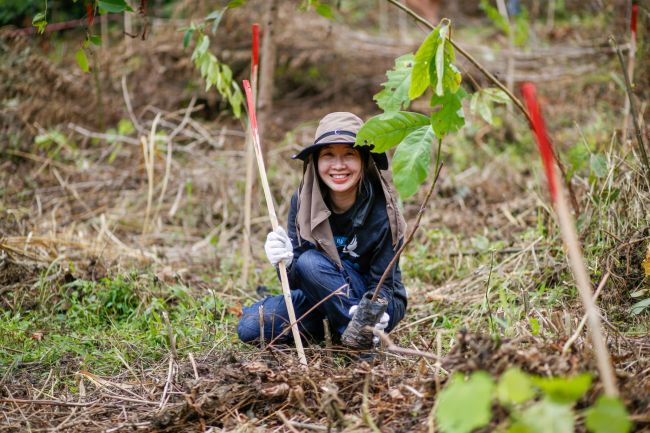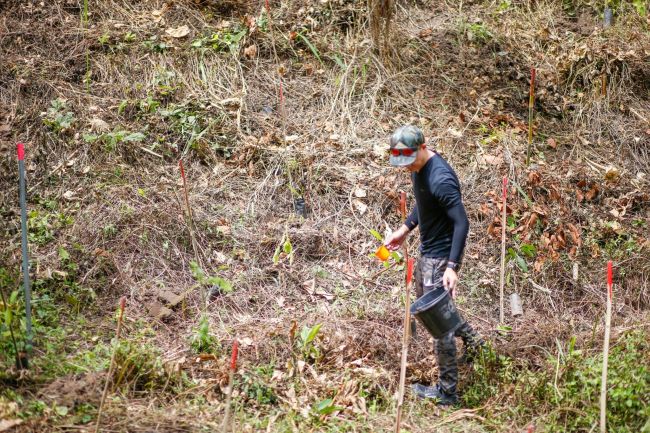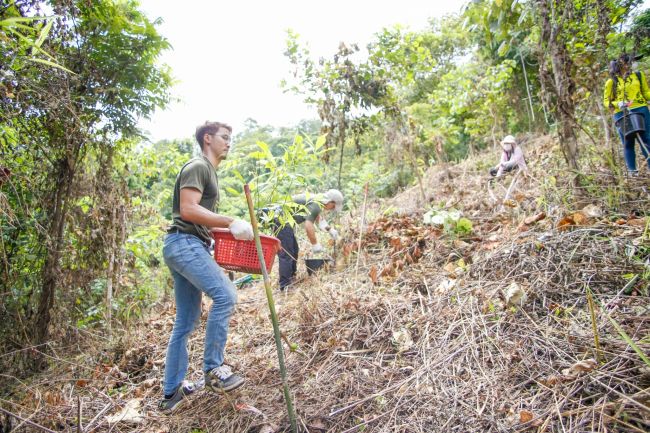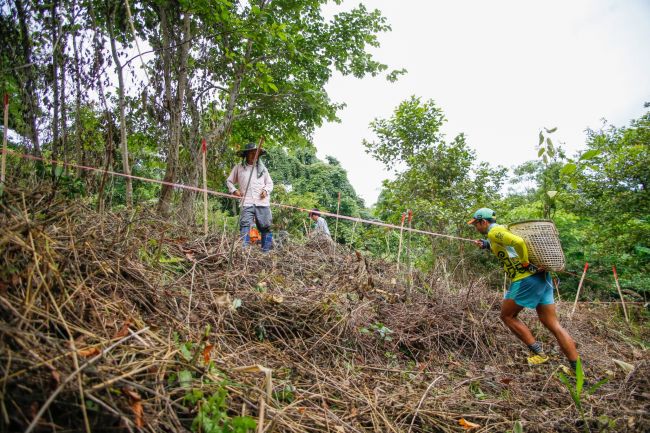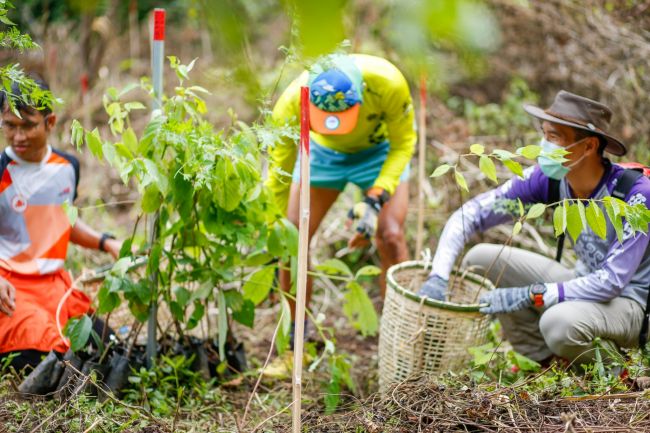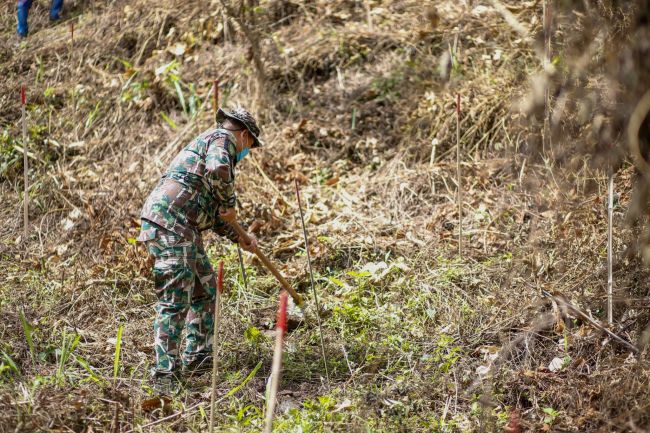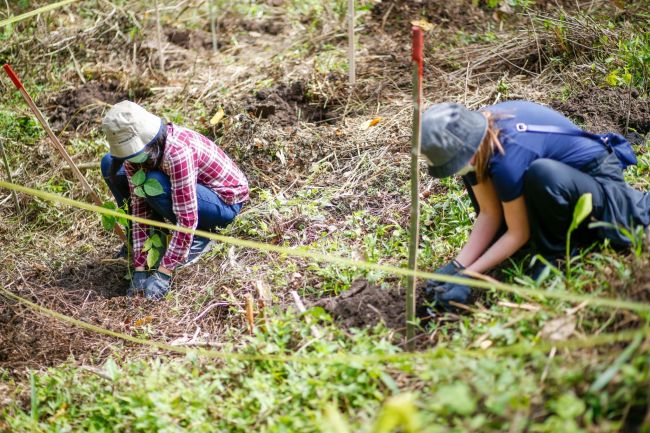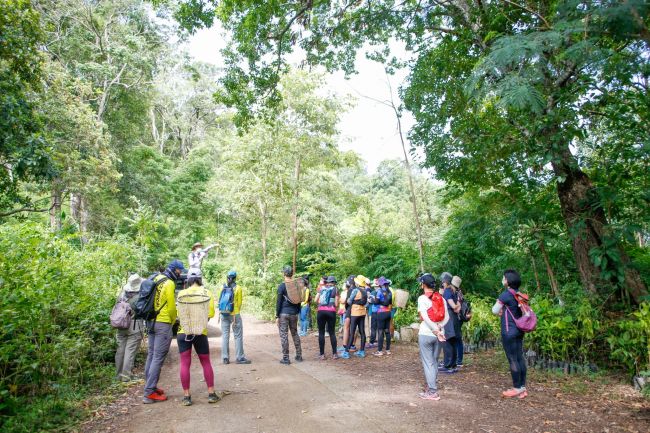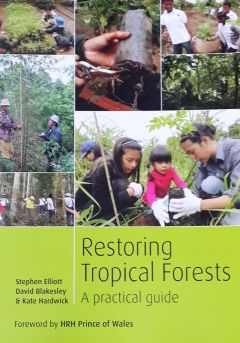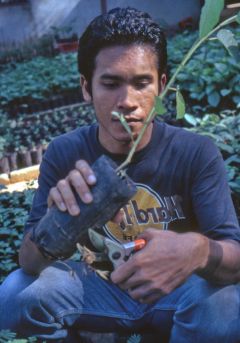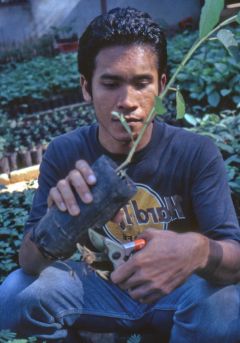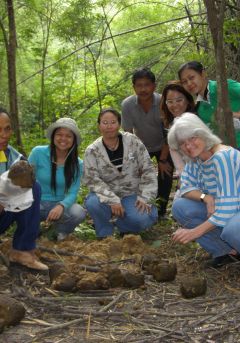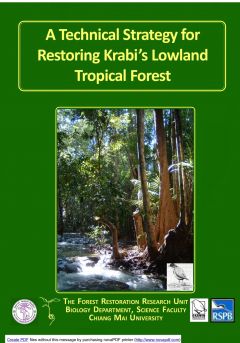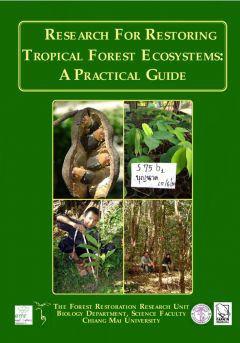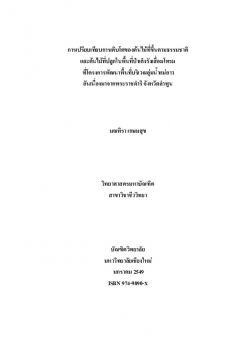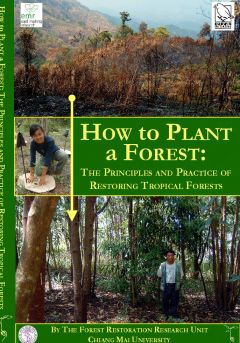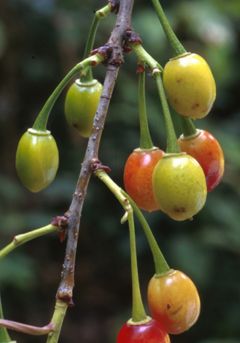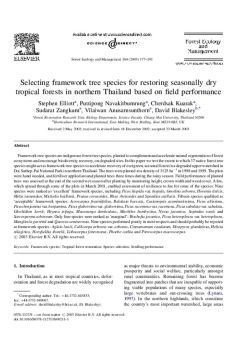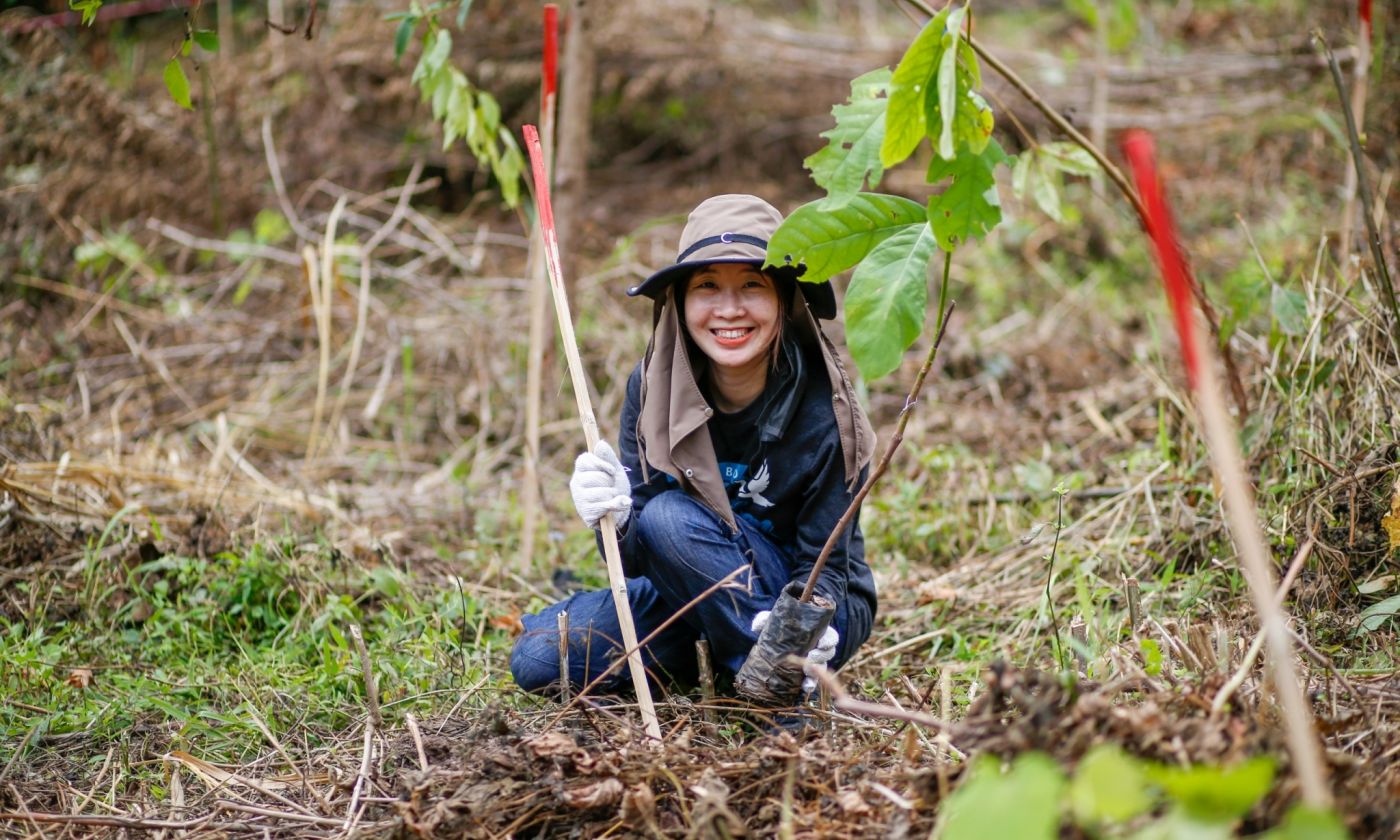
The project is assisting Doi Suthep Nature Center (DSNC), funded by the Pong Yaeng Running Club, to restore forest to four rai (0.64 ha) in Pong Yaeng District, with the participation of a wide range of volunteers and students. The scientific objectives are i) to test suitability of candidate framework tree species for restoring upland evergreen and ii) to determine if application of biochar can boost early tree performance on this highly degraded site.
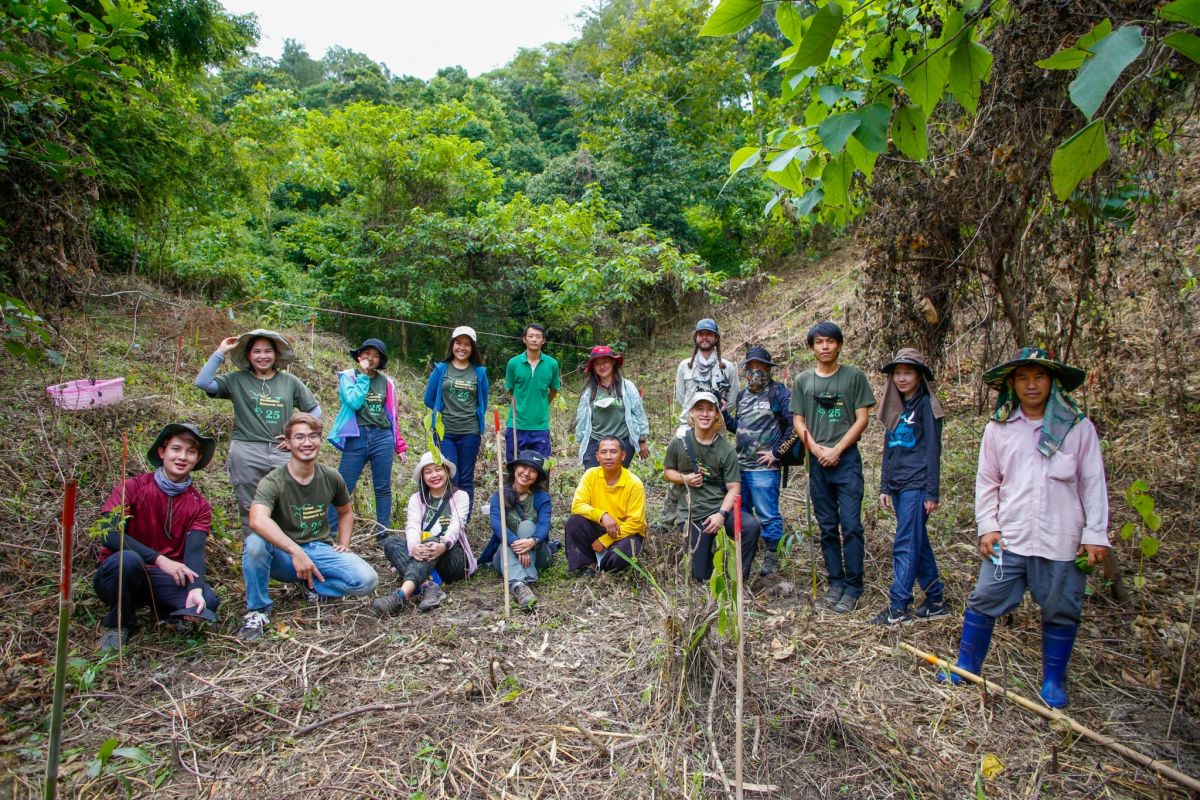
The project plan evolved during the third quarter of 2021 during discussions among FORRU-CMU, DSNC and DNP officers. A rapid site assessment was carried out, to determine the numbers and species of tree saplings required, barriers to restoration and to draft a project plan and budget. Pong Yaeng Running Club generously offered to fund the project and biochar was donated by Warm Heart.
Doi Suthep-Pui National Park Authority aims to reforest burnt, or otherwise degraded, areas within the park and had earmarked this site for restoration since cultivation of the site had ceased 10 years previously and natural forest regeneration was not progressing well.
Pong Yaeng Nai villagers and FORRU-CMU staff prepared the site two days before planting 1,350 trees on August 13th-14th 2021. Baseline monitoring for tree growth and survival was done two weeks thereafter, and maintenance (weeding and fertilizer application) will be performed 3 times per rainy season for 2 years.
Ten pioneer species and 10 climax species were selected for this site. Six species being tested for the effects of biochar: Melia toosendan, Hovenia dulcis, Spondias axillaris, Prunus cerasoides, Alseodaphne andersonii and Alangium kurzii, distributed in 5 subplots with non-treated trees (controls) distributed in the surrounding area. Other species being tested for suitability (without biochar treatment) include Balakata baccata, Acrocarpus fraxinifolius, Mallotus philippensis, Quercus semiserrata, Cryptocarya amygdalina and Cinnamomum iners.
21: Restoring Tropical Forests: a Practical Guide
Available in English, Spanish and French The authors at a publishers' meeting, Kew 2012Restoring Tropical Forests is a hands-on guide to restoring degraded tropical forest ecosystems. Based...
22: The use of Asian Ficus species for restoring tropical forest ecosystems.
ABSTRACT: Fig (Ficus spp.) trees have been promoted as framework species for tropical forest restoration throughout Asia, because they are considered to be keystone species. This article presents...
23: Reproductive Ecology and Propagation of Fig Trees (Ficus spp.) as Framework Trees for Forest Restoration
ABSTRACT: Fig trees (Ficus spp.) have been promoted as framework species for tropical forest restoration, because they are considered to be keystone species. This study investigated the...
24: การฟื้นฟูป่าเสื่อมโทรมในพื้นที่แห้งแล้ง : แนวคิดและแนวทางปฎิบัติเพื่อการฟื้นฟูป่าในภาคตะวันตก
รายงานการรวบรวมองค์ความรู้จากโครงการ "การวิจัยเพื่อการฟื้นฟูป่า" ในชุมชนหมู่บ้านแก่งปลากด ที่มีพื้นที่ติดกับเขตรักษาพันธุ์สัตว์ป่าสลักพระ มีการดำงานร่วมกันระหว่าง เครือข่ายอนุรักษ์ช้าง (ECN)...
25: A Technical Strategy for Restoring Krabi’s Lowland Tropical Forest
This report is one of the outputs from the project “Gurney’s Pitta Research and Conservation in Thailand and Myanmar”, implemented by the U.K.’s Royal Society for the Protection of Birds (RSPB)...
26: Research for Restoring Tropical Forest Ecosystems: A Practical Guide
Aimed at researchers and their supervisors, this technical manual describes how to establish a forest restoration research unit (FORRU) and implement a research program to determine how best to...
27: A Comparison of Growth of Naturally Established and Planted Trees in a Degraded Deciduous Dipterocarp Forest: Assessing the Potential for Forest Regeneration
Deforestation is widely acknowledged as a major environmental problem in the tropics, causing loss of biodiversity and environmental degradation (e.g. soil erosion) Therefore, this...
28: How to Plant a Forest: The Principles and Practice of Restoring Tropical Forests
FORRU-CMU's second practical training manual was published in 2005. It includes generic principles of restoration theory and practice, applicable throughout the tropics, as well as descriptions...
29: Selection of Prunus cerasoides D. Don seed trees for forest restoration
ABSTRACT: Prunus cerasoides D. Don has been identified as a ‘framework species’ for restoring evergreen forest in seasonally dry climates. The aim of this study was to develop criteria to select...
30: Selecting framework tree species for restoring seasonally dry tropical forests in northern Thailand based on field performance
ABSTRACT: Framework tree species are indigenous forest tree species, planted to complement and accelerate natural regeneration of forest ecosystems and encourage biodiversity recovery, on degraded...

